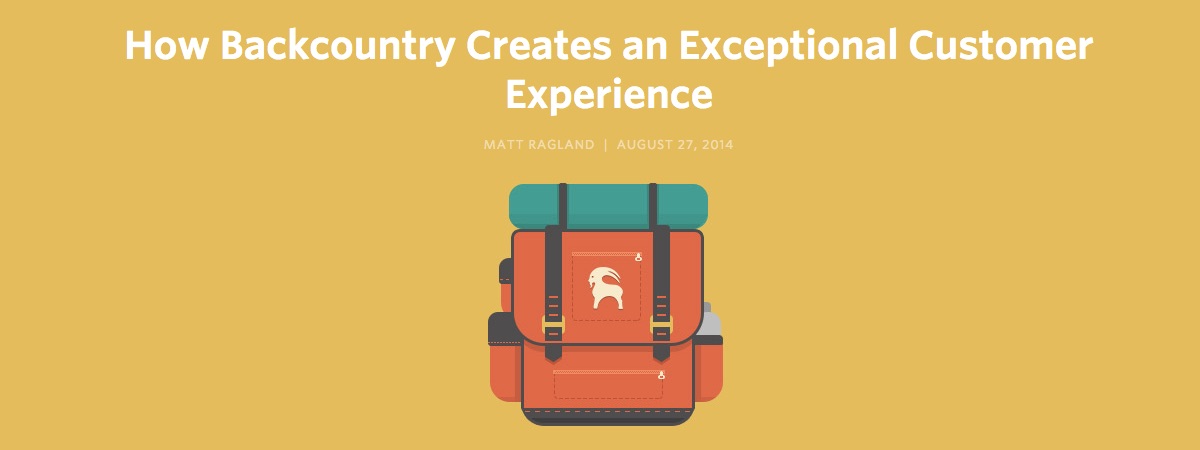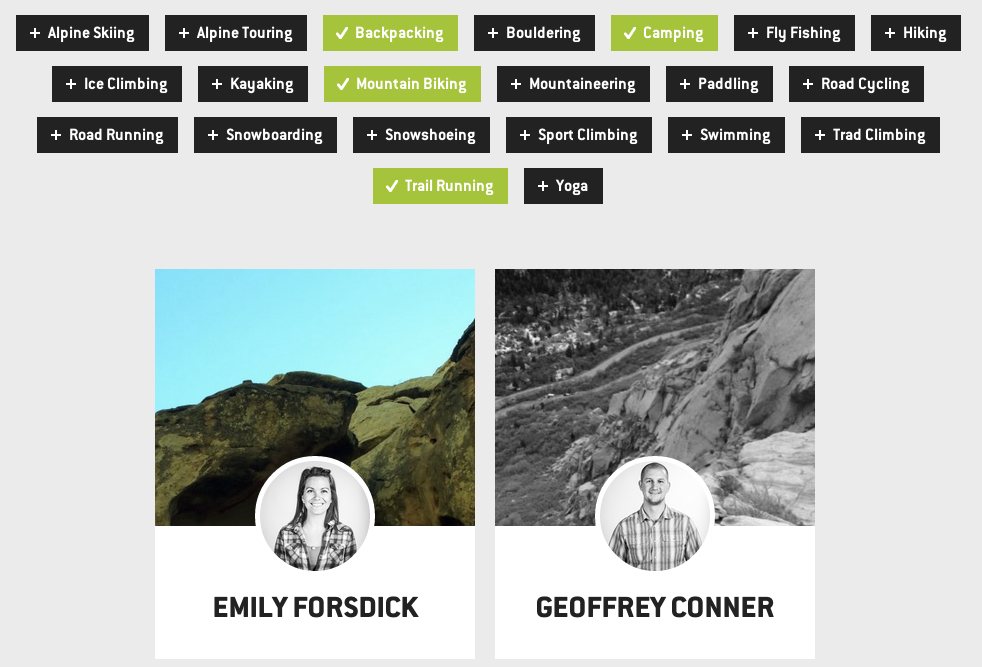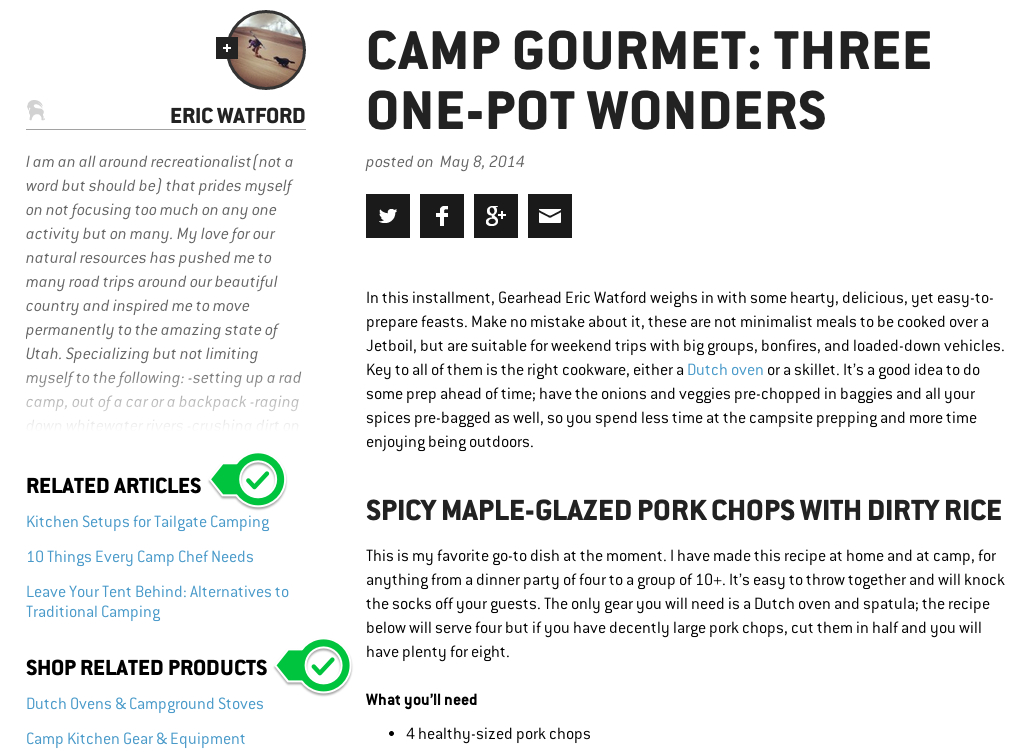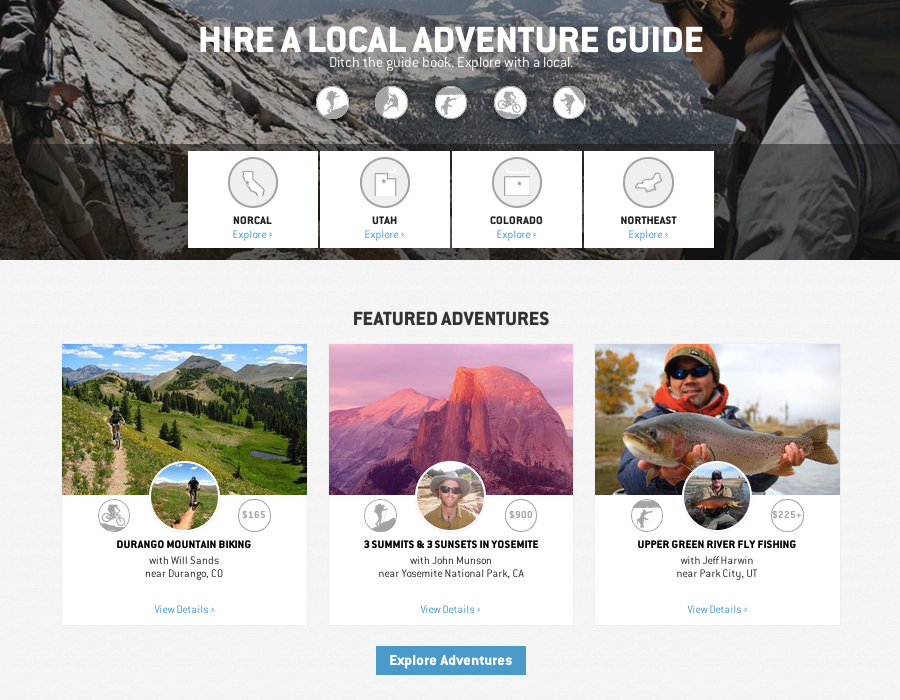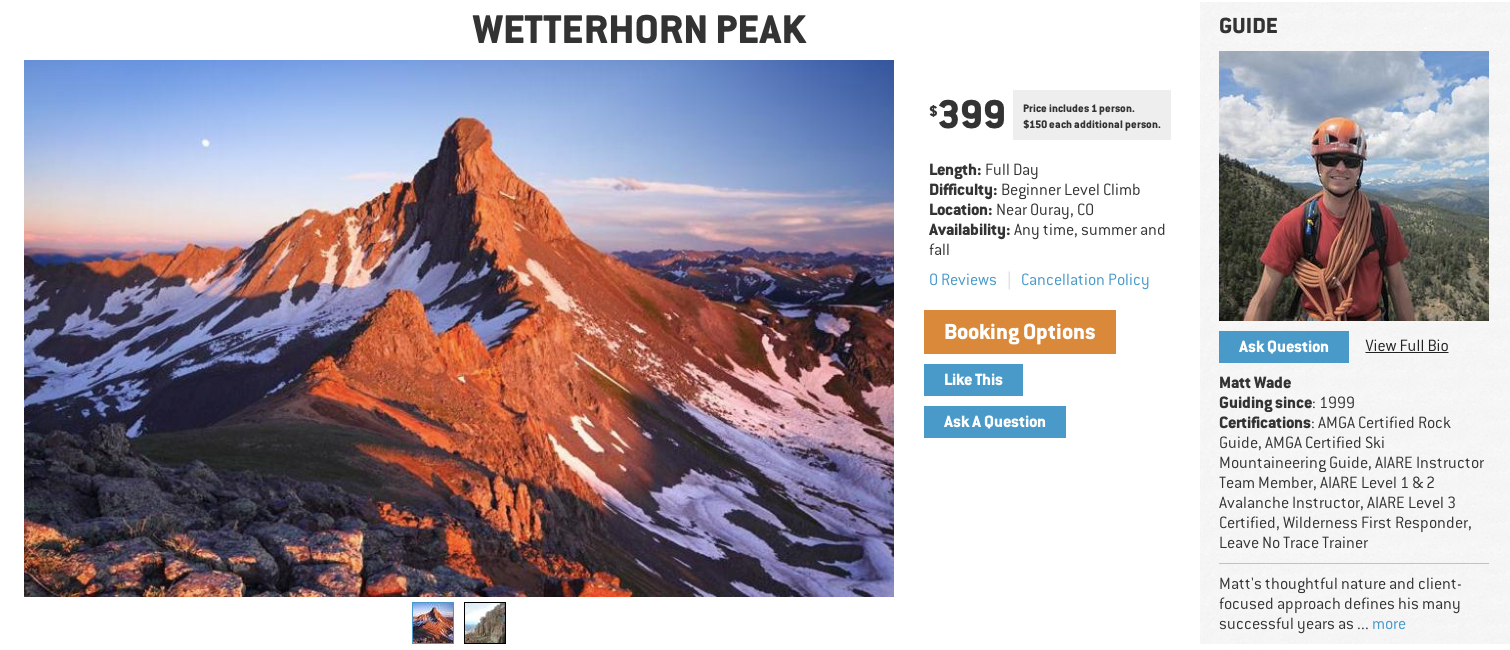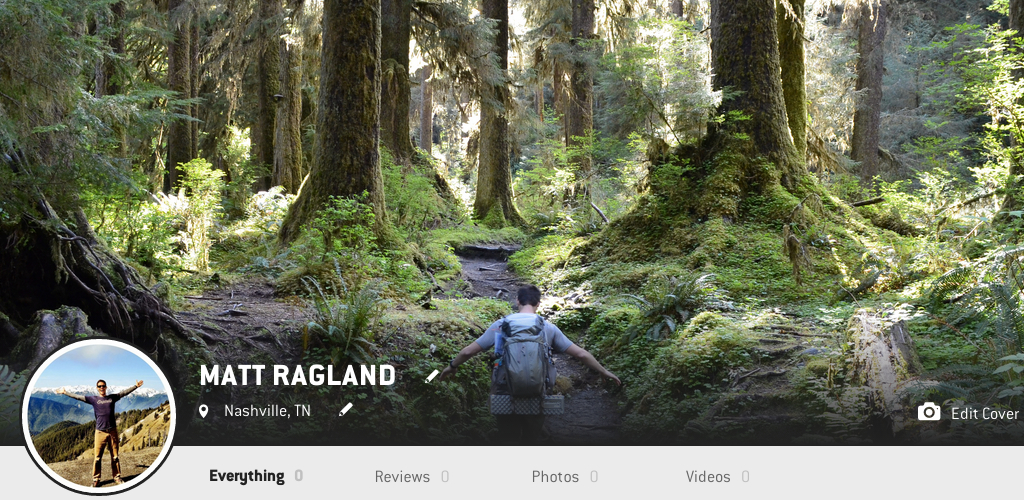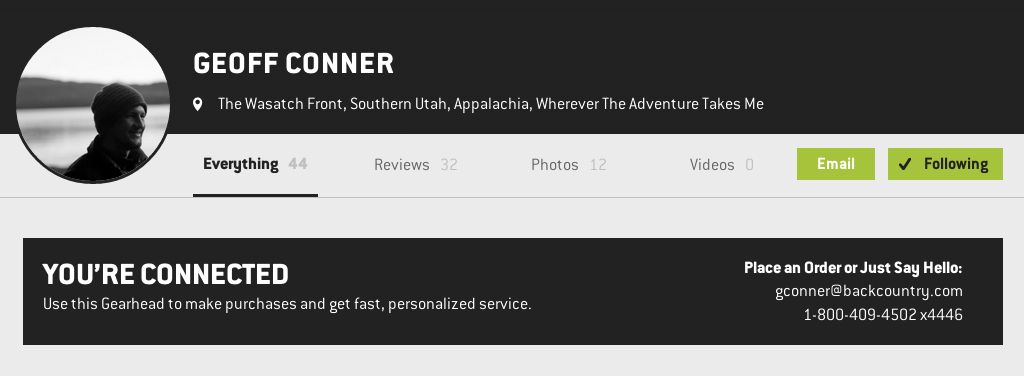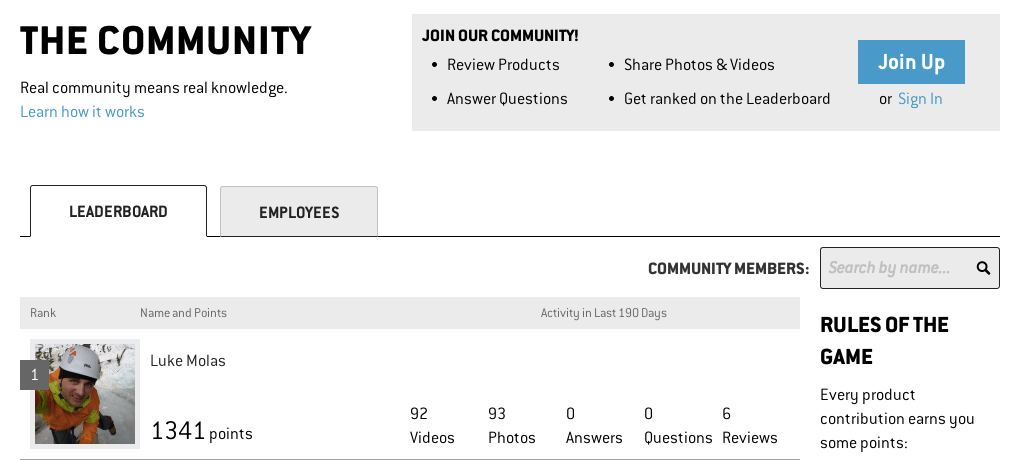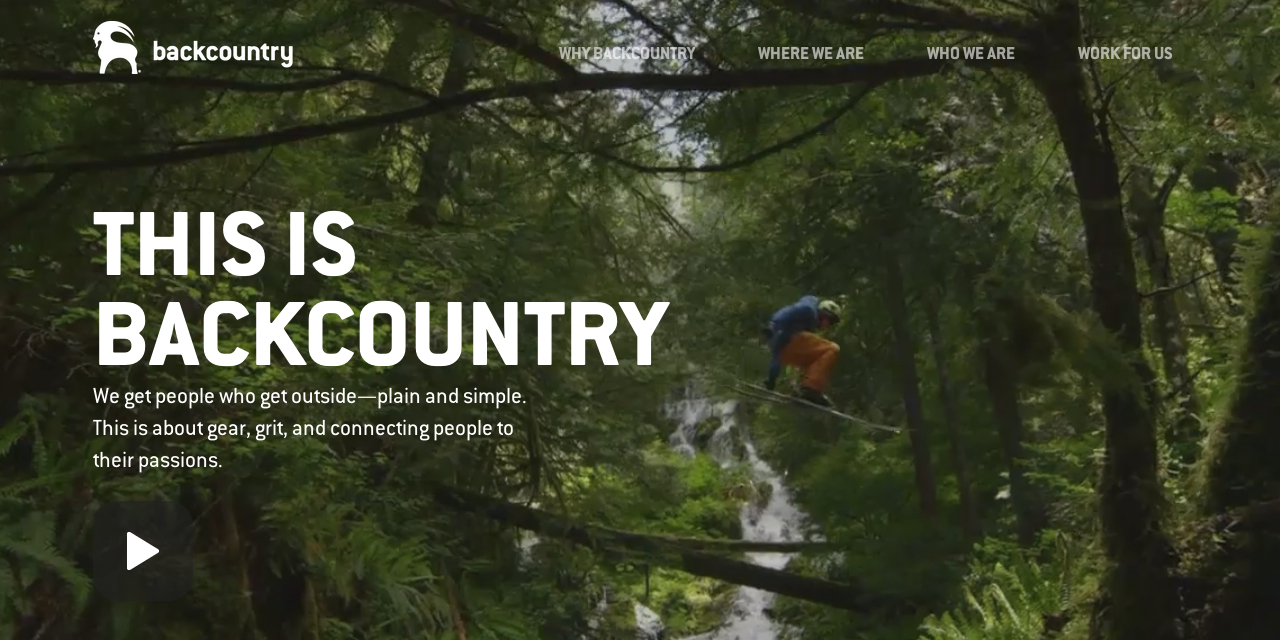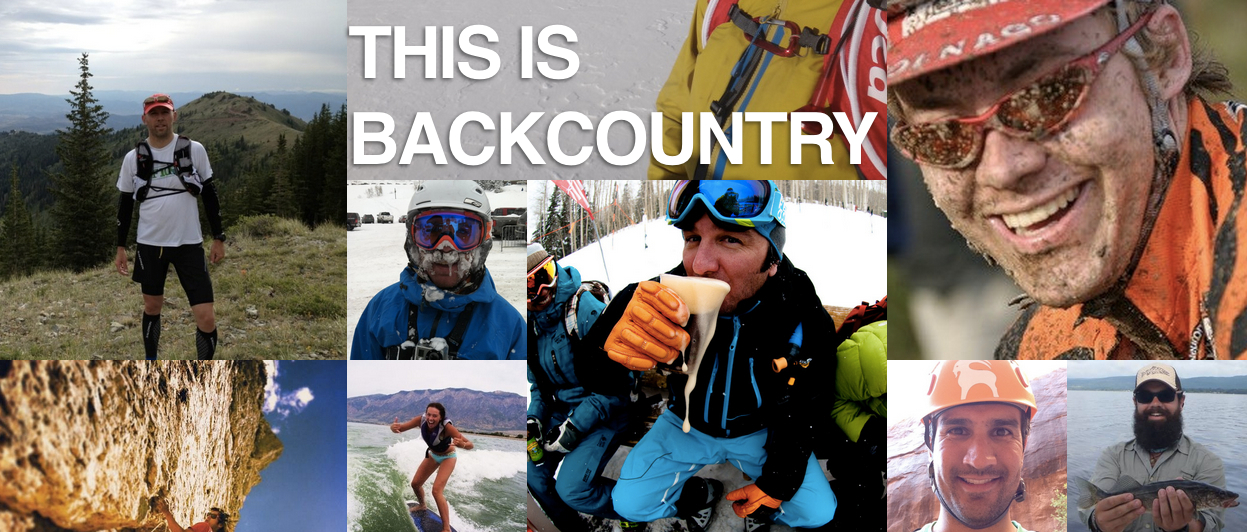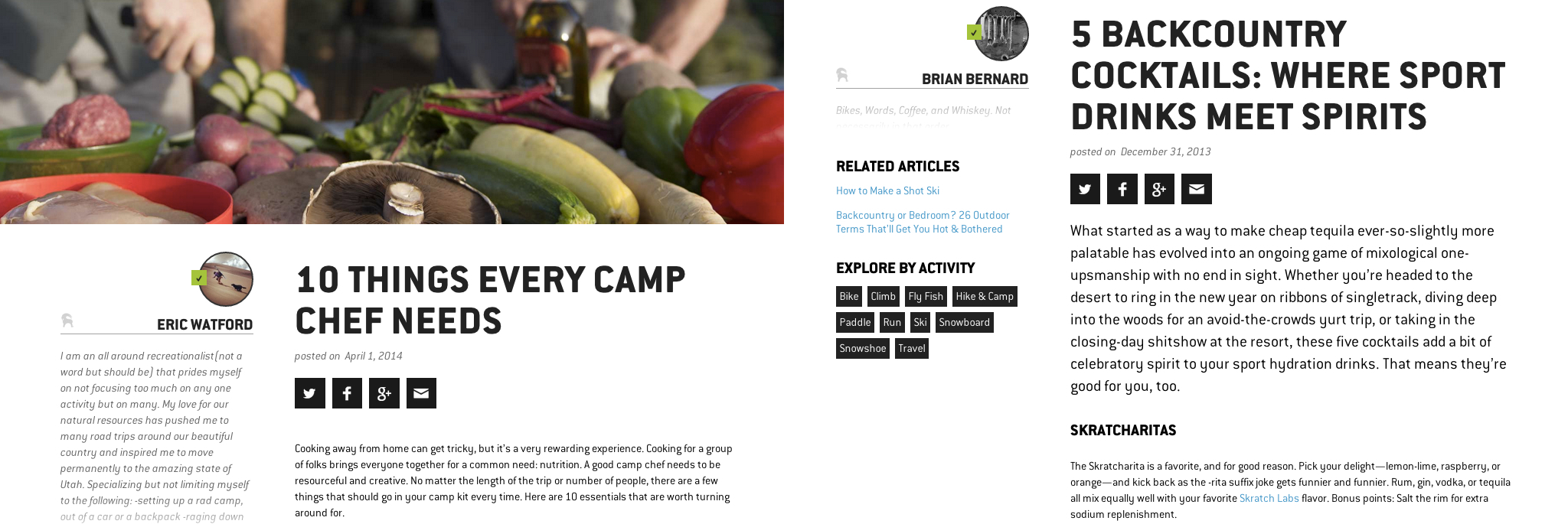This post was originally published on the HelpScout blog.
If you’re currently thinking about your next big outdoor adventure (as I always am), we’re on an ever-changing scale of balancing the elements, gear, and knowledge needed to have fun and stay safe.
For all the different places to gather the right gear and knowledge for an outdoor trip, Backcountry.com has emerged as one of the most immersive and educational resources in e-commerce.
Outdoor gear has always been particularly inclined to physical locations, since backpacks, skis, climbing harnesses, and other specialized gear is so personal. I wouldn’t want to order a backpack for a week long trip, only to discover the pack rubbed my back raw after two miles. It’s not the easiest business sector to enter, especially as an online-only retailer.
From their humble beginnings in 1996, selling avalanche beacons out of the founder’s garage, to $81 million in revenue, Backcountry has succeeded because of an uncommon commitment to customer experience. As you’ll see, customers are taken through the entire adventure life cycle without ever leaving the Backcountry site.
From what I’ve experienced and read about the company, there are a five fundamental markers Backcountry concentrates on, driving their incredible customer experience. The good news is, you can also use them in your own business. Here they are:
Interest – Collaboration – Education – Guidance – Community
Once the interest for a new adventure sparks, a customer heads to Backcountry.com in search of new gear. Smack on the front page is one of the most engaging pieces of customer service I’ve ever seen, the Gearheads.
After clicking on the activities I commonly pursue, I can see real people who share these interests with me, and can make recommendations on how I can go a little faster, farther, and higher. This is an incredible service for connecting to employees and learning more about what gear will serve you best outdoors. Think of it like a concierge for all the fun things you enjoy!
After I selected Geoff, he’s always easy for me to personally reach out to and ask questions. Right away, we’ve formed a connection that fosters collaboration, and helps educate me about the activities I want to do more of.
Why Gearheads Matter for Backcountry
This is not only a great value-add for the customer, but for the business as well. For HelpScout readers, it’s no secret that loyal customers are worth 10x their initial purchase, and 80% of buyers would pay more to ensure a superior experience!
But this is more than simply training your reps to do and say the right things, this is giving customers a face and name to interact with for the foreseeable future!
The importance of faces and personality in the customer experience cannot be minimized, and it’s crucial to building trust in all areas of customer care.
Backcountry’s ability to connect us with each other face-to-face reflects the findings from a study of radiologists back in 2008.
In the study, radiologists who saw a photo of their patient before reading their scans often led to a more meticulous interpretation and greater empathy in patient care. Take a look at these lines from the study, and notice the strong correlation with customer care.
“Our study emphasizes approaching the patient as a human being and not as an anonymous case study. Technological advances have further distanced the radiologist from interaction with the patient, since they are now able to view images from remote locations.”
The impact on Backcountry’s business can be significant. If customers begin to think of their gearheads as friends (certainly the goal), it brings a tangible human interaction to an impersonal part of the experience, and subsequently abolishes one of the main reasons people still like to visit physical store locations. If that wasn’t good enough though, Gearheads are also empowered to be the company’s primary source of content in how they educate and inform customers.
Curated, Relatable Content Creates Trust
Whether you’ve bought a product from Backcountry or not, they’re here to help. The Explore Center is packed with articles, videos, trip plans, guides, and many other ways to have an adventure. They’re following the content marketing playbook perfectly, offering resources that build trust and familiarity with the brand. Check out this striking design from their Camp Guide.
No matter what outdoor activity you enjoy, there’s a piece of content with you in mind. Sticking with the customer interest of a backpacking trip, let’s drill further down.
The two parts of backpacking many struggle with are how to actually pack a pack, and how to prepare edible food that doesn’t leave people eating Clif bars for a week. In this infographic, Backcountry educates customers with a fantastic visual example of how to pack for the trip.
To become the camp’s gourmet chef, dive back into the Explore pages, and find three one-pot wonders, written by Gearhead Eric Watford. It’s a great collection of directions, recipes, and equipment needed to pull this off, all on one page. The format also helps break up the traditional placement of products, and allows the customers to see how everything comes together to create a memorable adventure.
The resources are incredibly detailed, and help break down the barriers of purchase, allowing the buyer to feel more comfortable with their decision.
How an Ecommerce Site Gets Down and Dirty
The point of sale is where most ecommerce sites stop, including many great companies who continue to educate and provide value after the sale. But Backcountry sets itself apart by guiding customers with the Detour platform.
Where many retailers offer packaged trips or guides for hire, Backcountry flips the model around by empowering local guides and connecting them directly to the customer. Detours is a great way for local guides to use their skills and knowledge, and provides another unique experience for Backcountry fans.
To Backcountry, this is an important part of being the center of a customer’s outdoor needs. CEO Jill Layfield puts it this way,
Detour sets our brand apart by offering tailored, locally-guided excursions that are unique and unrivaled. It provides a sense of exploration in an entirely new format, with skilled and knowledgeable guides leading guests to lesser-known powder stashes, crags, singletrack and off-the-beaten-path hiking destinations around the country.
CMO Scott Ballantyne went a step further in emphasizing the necessary human connection that must be a priority in all they do,
Rather than sell packaged trips, we opened it up to let the consumers have a direct link with local guides. It’s about adventure and discovery. That’s what our consumers are looking for.
For all companies, it’s important to consider how we can best serve our customers. Detours is a very intentional, hands-on approach at seeing the customer through the entire cycle of their experience, while also empowering local experts in their niche. For e-commerce companies, this is an incredible way to add value and separate your brand from the competition.
Be #GoatWorthy – An Integrated Social Platform
Now that the trip is over, and the customer has gone through the stages of interest, collaboration, education, and guidance, there is still one more way Backcountry looks to serve the customer. Sharing stories, media, and knowledge with the community.
Rather than relying solely on social platforms out of their control, Backcountry has a fully-integrated social community on their site. Here’s mine:
Even better, one of my first connections is Geoff, my own personal gearhead.
From here, I can connect with other gearheads and adventure-seekers, while adding value to the site through reviews, pictures, and videos. Backcountry incentivizes their customers by ranking their contributions on the Leaderboard, and offering perks to the top contributors.
For common social media interactions, Backcountry uses the hashtag #GoatWorthy, a nod to the mountain goat which serves as their logo. As Gary Vaynerchuk notes in Jab, Jab, Jab, Right Hook, this is a great example of a company owning and curating a distinct hashtag, using concepts no other brand would connect with (p. 102).
A Company Culture Built on Adventure and Trust
An important (and oft-overlooked) aspect of the customer experience is the employee experience! The safety and treatment of front-line employees has a direct correlation with the happiness and satisfaction of customers. Southwest, Chipotle and Costco all understand this approach, and place incredible energy and resources into developing a strong culture of trust and empowerment.
A quick glance at the Backcountry job site shows how the company seeks to take care of their employees while cultivating the adventurous mindset so critical to their brand. Layfield describes the process this way;
People that are competitive want to win. You don’t have to tell them to be in the building from nine to six. If you hire the right people, they will get the job done. It’s a manager’s job to hire those people and not to tell them when to be in the office.
This open-minded atmosphere allows employees to do the work in a way that suits their strengths and cultivates a positive work-life balance. Employees also enjoy a generous gear discount, environmental initiatives, carpool bonuses, and a gear library where they can check out and test different pieces of gear in their own adventures. This in turn helps Gearheads understand and recommend products to customers, and create better content in the Explore section.
In the end, everything works together in creating an incredible experience for customers.
As a leader, you are arguably the least important person when a customer has a question! Giving your staff the necessary tools, space, and inspiration to do great work is of paramount importance to creating a great customer experience.
A Company’s Role in the Greater Story
To wrap up, I want to share with you how I used a simple story structure to decode how Backcountry lays the groundwork for a world-class customer experience. The good news is that it’s easy for you to steal and implement, so here it is.
Understand the Customer
This may seem too simple, but often it’s overlooked. Backcountry isn’t just looking for any outdoorsman, they want people on the fringes. People looking for new thrills, adventures, and fashion all rolled together. We want to be the hero of the stories at the bar, and get hundreds of likes on a cool image or video we shot on the latest epic trip. This person is fundamentally different than the family car camper, and Backcountry knows this. They even differentiate base-style camping by sharing top (camp) chef tools and backcountry cocktails.
Identify the Problem/Challenge
The hero (as we’ll now refer to the customer), has a few challenges standing in the way of his next adventure. As we’ve shown, Backcountry offers the solutions to a wide array of challenges and problems, including your personal guides for the adventures before (Gearheads) and during the trip (local guides).
You are the Guide, not the Hero
One of the biggest mental shifts a business can make is realizing they are not the hero in the story, the customer is! They have a problem and need a guide to get going! As guides, we must be ready to provide help, advice, and a plan of action for the hero. For Backcountry, it means they are with you throughout the entire adventure life cycle, from the call to adventure through the culmination of the quest.
Present the Plan
This is where content marketing and great support really pay off. At Backcountry, the Explore Center, Gearheads, and Detour Guides give the hero a clear understanding of what it will take to be successful on their journey.
Encourage Contribution
Community interaction is a big part of the Backcountry brand, and serves the customer really well. People offer advice and feedback to each other, playing the role of collaborator and mentor in the hero’s journey. The hero is then compelled to return and contribute his own unique voice and experience to the group, now also a part of the guides which make up the community.
See the Entire Process
Remember the five fundamental markers Backcountry concentrates on? They are present in every part of the journey a customer experiences on the Backcountry site. A customer will:
- Have the initial spark of interest
- Find a Gearhead to collaborate with
- Visit the Explore center for education
- Receive guidance (either from a Detour guide or combination of the Gearhead and Explore center)
- Share stories and knowledge with the community
Want to see everything in action?
What Do You think?
How do you feel e-commerce companies can provide a better customer experience and connection? How can your business use the fundamental markers or story structures in your marketing? I’d love to hear your thoughts!
